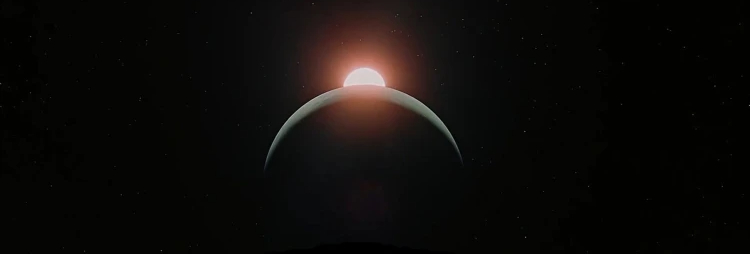[Please note: this review contains plot spoilers. Also, Prometheus is showing in 2D, 4DX, and IMAX DMR formats in addition to its original 3D version.]
Prometheus, filmed in 3D, is Ridley Scott's much-anticipated prequel to his science-fiction/horror classic Alien. A few years after Alien, Scott directed Blade Runner, a masterpiece of neo-
noir futurism, and Prometheus marks Scott's long-awaited return to science-fiction, more than thirty years later. (Evil Dead director Sam Raimi made a similar return to his genre roots with his recent horror film
Drag Me To Hell.) Alien spawned a long-running franchise; the three sequels were all made by outstanding directors (James Cameron, David Fincher, and Jean-Pierre Jeunet), though Scott was not associated with any of them.
Prometheus opens with a title sequence clearly inspired by Alien, as the letters of the title are formed slowly from a series of straight lines. Also, the opening shot resembles the first image of Stanley Kubrick's 2001, and, like 2001 (and Terrence Malick's
Tree Of Life), Prometheus explores the origin and evolution of life. In a prologue sequence, we see a muscular man drink a strange black liquid and plunge into a waterfall. His body begins to disintegrate, and his DNA fuses with the water to create life on Earth. Only much later is it revealed that he was an alien from a distant solar system.
As in Alien, a group of astronauts exploring a seemingly barren moon encounters a hostile alien species. The Prometheus expedition was instigated by a scientist, played by Noomi Rapace, who discovers a star map in pre-historic
cave paintings. The voyage to this constellation is funded by an elderly industrialist, played by Guy Pearce, and supervised by his assistant, played by Charlize Theron. Potential narrative flaw: the aliens created microbial life on Earth, though that happened long before the paintings, so why were people still aware of their extra-terrestrial origins after millions of years of evolution?
Noomi Rapace (an actress of considerable versatility) plays a character who initially seems similar to Jodie Foster in Contact. In a tense and claustrophobic set-piece that updates the famous chest-bursting scene from Alien, Rapace performs a Caesarean section to abort an alien foetus. (This sequence should inspire an update of Barbara Creed's book The Monstrous-Feminine.) Rapace's character subsequently develops into a heroic precursor to Sigourney Weaver's role in Alien. Charlize Theron gives a performance as icy and authoritarian as her role in Snow White & The Huntsman. Guy Pearce (outstanding in
Memento and LA Confidential) is barely recognisable wearing thick old-age prosthetics; presumably, other sequences showing him as a younger man were cut from the final version.
The most impressive performance is that of Michael Fassbender (who starred in the recent film Shame). He plays an android called David, who watches Lawrence Of Arabia and imitates Peter O'Toole. His character's name is presumably a reference to the android child in Steven Spielberg's
AI (a project originated by Kubrick). His voice is as calm yet inscrutable as that of the computer, HAL, in Kubrick's 2001, and like HAL, David is not entirely trustworthy. Like the equally devious android in Alien, David is ultimately decapitated and reanimated. Of course, he is also a replicant, like the principal characters in Blade Runner.
Prometheus is surprisingly intense and violent: it may be a science-fiction blockbuster, though it's aimed at adults. It's reassuring that such an expensive event-movie hasn't been sanitised to appeal to a wider audience. However, presumably due to its much larger budget, the film lacks the gritty feel of Alien (and John Carpenter's Dark Star). Also unlike Alien, Prometheus has a constant air of grandiosity, with vast spaceships and landscapes, and philosophising characters. This could have been pretentious, though it's arguably justified by the stunning production design and cinematography.
Less defensible are the various unexplained character motivations. We are led to believe that Guy Pearce's character died before the voyage, though he later turns up on the spaceship in an insignificant plot twist. More intriguingly, David the android deliberately infects one of the astronauts with alien DNA, though we have no real idea why. The film's ending is its only serious weakness, with a CGI alien spacecraft risibly squishing Charlize Theron, and the final sequence merely provides the set-up for a potential sequel.

